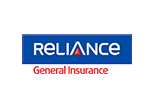Sunroof vs Moonroof: Is There Any Difference?
Know the Key Differences Before Choosing Your Car
Sunroofs, also called moonroofs, are openings in a car's roof that allow fresh air and sunlight into the cabin. They come in different styles like pop-up, slide-open, or panoramic. Beyond enjoying nice weather, sunroofs have some practical benefits too. But what’s the actual difference between the two, and should you even get one, especially in a country like India?

Key Highlights
-
A moonroof is made of tinted glass, allowing sky visibility even when closed
-
A sunroof is usually opaque and body-colored.
-
Sunroofs offer better airflow, a roomier feel, aesthetic appeal, and potential resale value.
-
They can raise cabin temperature, fade interiors, and require more maintenance.
-
Ideal for style-conscious buyers, but not always practical in India’s hot and rainy weather.
What is a Sunroof?
A sunroof is like a power-operated window but installed on the roof of a car. It can slide over or pop open to allow more air and light into the cabin. Sunroofs on most mass-market vehicles come with an interior sliding panel that can be opened or closed to let light inside the cabin. These panels are typically finished in the same colour and material as the car's headliner. Two sizes of sunroofs are available in vehicles sold in India today, and the larger one is called a panoramic sunroof.
What is a Moonroof?
A moonroof is a type of sunroof, but it’s made of tinted glass. Unlike in a regular sunroof, you can see the sky through it even when it’s closed. A moonroof can slide or tilt open, providing the same circulation and light as a sunroof. A moonroof is more common in higher-end or mid-premium vehicles.
Key Differences Between Sunroofs and Moonroofs
|
Feature |
Sunroof |
Moonroof |
|
Material |
Body-colored panel or opaque |
Tinted glass, transparent |
|
Visibility |
Can’t see through when closed |
Offers sky view even when closed |
|
Operation |
Manual or motorised |
Primarily motorised |
|
Design |
More basic, often pop-up or sliding |
Sleek, premium aesthetic |
|
Common in |
Entry-level and mid-range cars |
Mid to high-end cars |
Types of Sunroofs and Moonroofs
|
Roof Type |
Features |
|
Pop-Up Sunroofs |
|
|
Spoiler Sunroofs |
|
|
Inbuilt Sunroofs |
|
|
Panoramic Roof Systems |
|
What are some Advantages and Disadvantages of a Sunroof or Moonroof?
The Pros
-
Cracking the sunroof is a great way to get fresh, cool air in your car's cabin without turning on the AC. This saves you some energy and fuel.
-
When the roof panel is fully retracted, the extra light and view of the sky make your car seem roomier. This can make you and your passengers feel more comfortable in return.
-
It has got some aesthetic appeal and makes the car look more luxurious.
-
Since it’s in high demand, the resale value of your car might go up.
The Cons
-
In India’s hot climate, direct sunlight can raise cabin temperature quickly, which means you will use your car’s AC more than usual. This will lead to more fuel consumption.
-
The extra sunlight can cause the interior colours and materials to fade more quickly.
-
The glass panelling, wiring, and mechanisms needed to operate a sunroof or moonroof make the top of your car heavier than if it had a plain roof.
-
Maintenance costs can go higher as roofs can leak sometimes.
When Should You Choose a Sunroof or Moonroof in India?
-
If you value style and aesthetics more, it can add the wow factor
-
If you’re looking for practicality and lower costs, a pop-up or inbuilt sunroof may suit you better.
-
If you live in extremely hot or rainy climates, weigh the pros against the potential discomfort and upkeep.
-
If safety is a concern (especially with kids), use the sunroof wisely and always wear seatbelts.
While sunroofs add luxury, their practical benefits in India are limited. Prospective buyers should weigh the risks and maintenance costs. Ensuring seatbelt use, checking sunroof insulation, and avoiding use in extreme conditions are essential precautions.














































